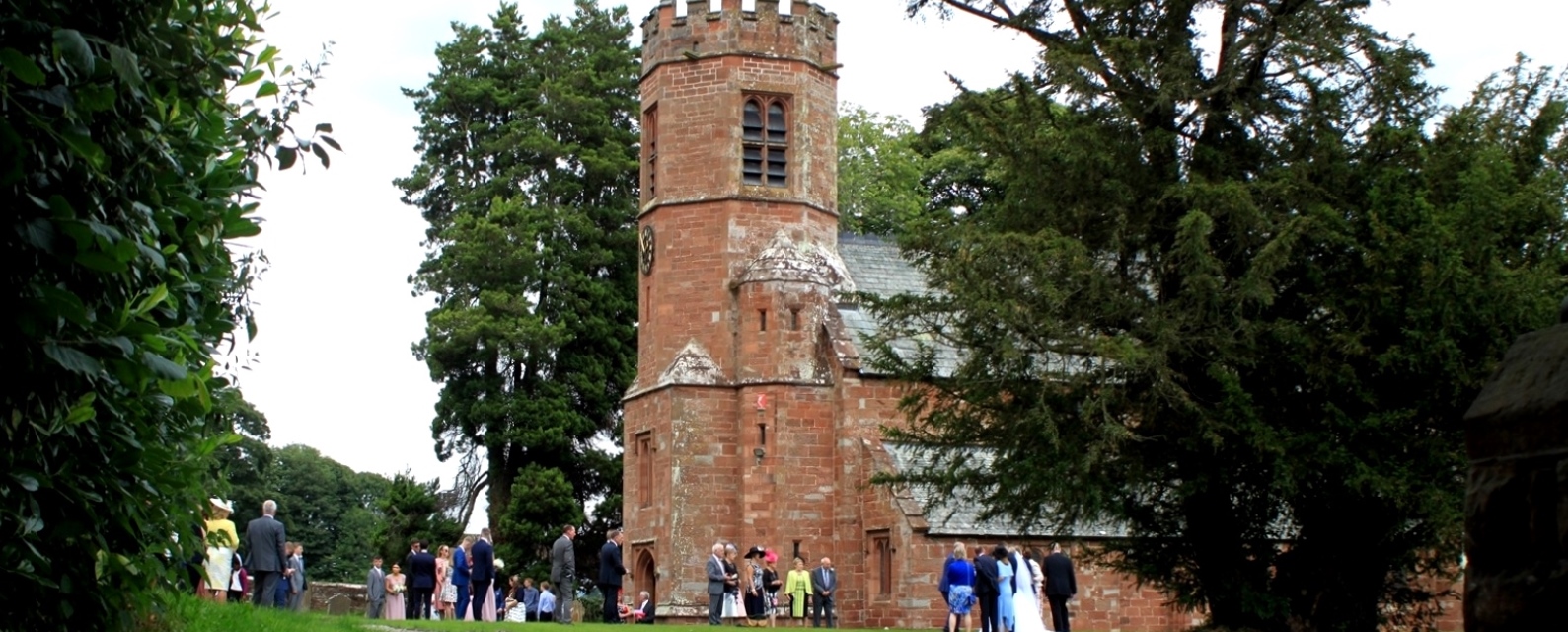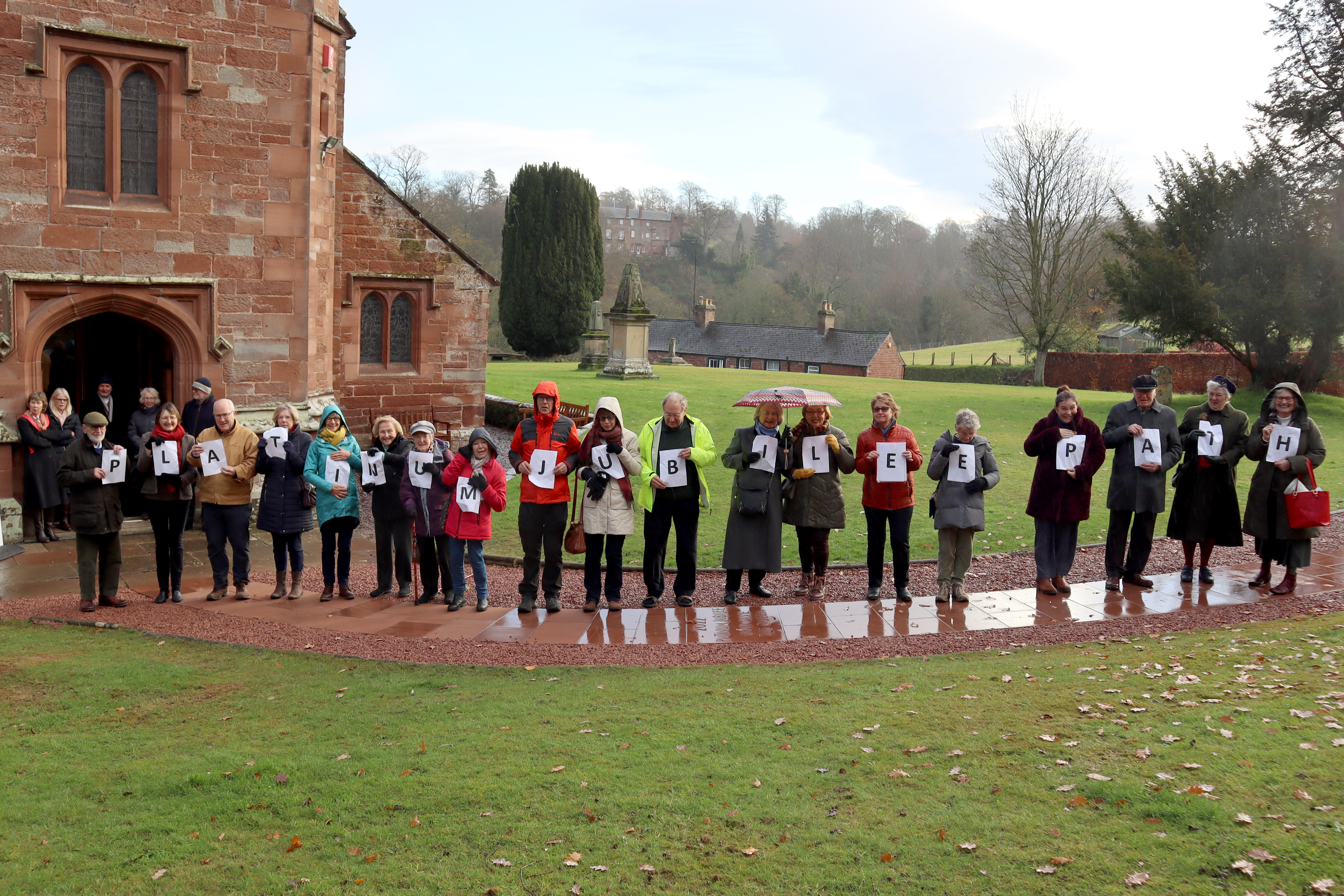
History of Wetheral Parish Church
Wetheral Parish Church is situated on the banks of the River Eden in the picturesque village of Wetheral. As well as being a place where a faith filled congregation worship God it is also a building of great historical significance. We leave the doors open for visitors to come and appreciate the sacred space during the week.
Over the years there have been various projects undertaken to improve the interior and exterior of the church. See the history section below. More recently, work was completed in 2016 to improve the entrance to the main church with new inner doors fitted to improve access for all ages, as well as additional heating and lighting. Due to the growth of the Tuesday Tots Cafe group at Wetheral Church, a new modern kitchen was fitted in 2017.
For information on Sunday service times at Wetheral please visit the 'Sunday services' page under the 'Church life' section.
Church Information Leaflet Number 1
Visitors Guide
Church Information Leaflet Number 2
'Faith' Nollekens Statue
More information can and be seen on this webpage.
Including the Wordsworth poem and more pictures
Church Information Leaflet Number 3
The Salkelds of Corby Castle
Link to a webpage on the Salkelds of Corby Castle
The Alabaster effigies of Sr Richard and Lady Jane are in the church.
Church Information Leaflet Number 4
The Howards of Corby Castle
Link to further information on The Howards of Corby
Link to the Howard Chapel Restoration Appeal in 1980s
Church Information Leaflet Number 5
Queen Elizabeth II Platinum Jubilee path
Link to further information on the Jubilee Path
Link to the Jubilee Diamond Jubilee Civic Parish Map with historical and geographical notes
The Wetheral Platinum Jubilee Path
Commissioned December 2022
Pictures and explanations can be seen on this webpage.
-----------------------------------------------------

THE HISTORY OF WETHERAL PARISH CHURCH
Who was Constantine?
This church is dedicated to the Holy Trinity and St. Constantine and until the Reformation also to the Virgin Mary. Constantine and Mary are pictured in the windows above the main door in some of the few pieces of medieval stained glass to have survived in Cumbria. It is a fragment of an earlier, larger memorial window. This is one of only two churches in England dedicated to a man called Constantine. The other is in Cornwall, in the village of Constantine five miles from Falmouth. However, the dedication is more common in Scotland. The Scottish border is only 12 miles away; in the past Wetheral was in Scotland. Three caves or cells in the red sandstone gorge above the River Eden are traditionally said to have been used as a hermitage by Constantine. They are known as St. Constantine’s Cell and, in the past, also as Wetheral Safeguard.
Roman Inscription
MAXIMVS. SCRI(P)SIT….LE(G) XX. VV. CONDISIVS. SIVS.
This inscription cut in the face of the rock a few feet above the river’s edge was the work of Roman soldiers and takes us back to around the year 400 AD. The writing implies that the Twentieth Legion was quartered here.
LEG XX V V CONDRAVSISIVS translates to
Condrausisius of the Twentieth Legion Valeria Victrix.
St Constantine
St. Constantine was of royal birth and brought Christianity to this area, which was then part of the Kingdom of Strathclyde, together with the better-known Celtic saints, Columba and Kentigern. St. Cuthbert came from what is now the North-East of England in the following century and the other saintly link is to St. Patrick, who was probably born on the Roman Wall to the east of Brampton, at Banks, about 10 miles from here. The patron saint of Ireland may well have sailed across the sea from the Cumbrian coast.
Wetheral Priory
For almost 500 years a Benedictine Priory existed about a quarter of a mile to the south of the church. All that remains is the gateway and porter’s lodge which are in the care of English Heritage. Admission is free. The Benedictine custom was for the mother house to be the Abbey, in this case St. Mary’s Abbey at York, hence the pre-Reformation dedication of Wetheral.
English Heritage Wetheral Priory Gatehouse
900 years ago
According to the old county histories, Nicholson & Burn 1777 and Hutchinson 1797, the Priory was founded by a Norman, Ranulph le Meschines, the first Norman Lord of Cumberland, in 1086 or 1088. Others have dated the foundation 20 years later but it is certainly more than 900 years ago and pre-dates the Augustinian Priory of Carlisle which, founded by King Henry I in 1123, became a cathedral ten years later. Carlisle Cathedral is the third oldest cathedral in the Church of England Province of York. Wetheral Priory initially came under the authority of Stephen, Abbot of St. Mary’s Abbey, York. The monks were granted the valuable rights to a sluice and fish pond on the river together with a mill which was not to be ‘interfered with’ by the Lord of Corby.
It is not known what kind of church building existed on the present site in Norman times though a mile and a half north the sanctuary of Warwick Church dates from those days and was served from Wetheral Priory. From the Register of the Priory published at the instigation of Archdeacon Prescott in 1897 we know that the Priory was endowed with the manor and church and certain lands near, with the chapel of Warwick and the churches of St. Michael and St. Lawrence in Appleby in Westmorland. They are about 35 miles to the south-east. King Henry I also added the right to feed pigs in the King’s Forest of Inglewood which extended from monastic sites. It is said that Thomas Cromwell, the King’s Chief Minister responsible for the dissolution of 800 monasteries, preferred ruins to remain as evidence of the shift in power and wealth within England. What had dominated Wetheral for half a millennium had all but disappeared within a few years. Thomas Denton writing in 1687 said that only the gatehouse remained entire and in good repair. It was thought to have been the house of the Rector in those days.
St Leonard's Church Warwick on Eden (now a private dwelling)
The church is in sandstone and has a slate roof with decorative ridge tiles and coped gables. It consists of a nave with a west porch, and a chancel with a Norman semicircular apse and a north vestry.
Holy Trinity and St Constantine Wetheral.
The structure is much as it would have appeared at the dissolution of the Priory, yet nothing in the present building, unlike Warwick, seems to date from the Norman foundation. The monks can be credited with most of the present building which dates largely from the 13th and early 16th centuries. The association of the church with Wetheral Priory is commemorated with a pair of inscriptions to priors William Thornton (1500-1530) and Richard Wedderhall (1534-1539). Within the church, the most interesting historical features include the 13th century font and a tomb chest with effigies to Sir Richard and Dame Jane Salkeld, from about 1500. The nave and chancel are a mixture of early pointed style in the pillars and arches with perpendicular in the clerestory and aisle windows. The nave was heightened shortly before the dissolution and refurbished in Victorian times. The present octagonal tower dates from 1882 when it replaced a square tower of 1760.
St Constantine's Cells
Three cave dwellings are cut into the cliff face above the River Eden. They are known to have been used in the 14th century by the Priory of Wetheral as a place of refuge during border raids . They are also thought to have been used by St Constantine when a hermit. The access would probably have been by ladder. The cells now have a front wall in masonry, with three windows, and inside are a fireplace. They can be visited by walking south from the church, through the National Trust Woodland and taking a path to the left down towards the river after following the path uphill from the NT gate, see the map. They have been cut out of the rock, and measure 20 feet (6.1 m) by 9 feet (2.7 m) by 9 feet (2.7 m). The cells are a scheduled monument.